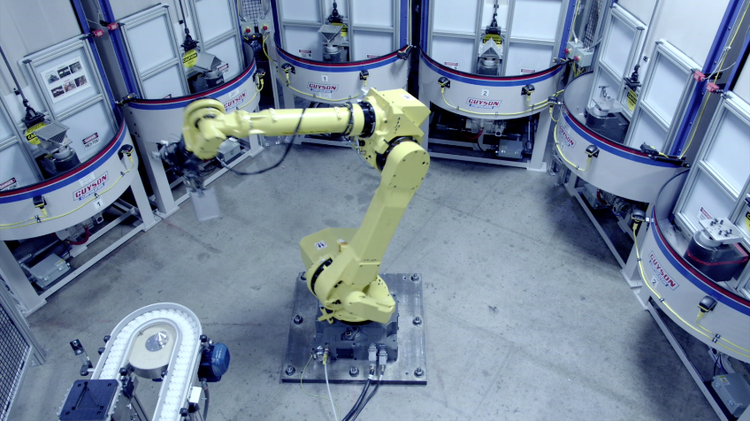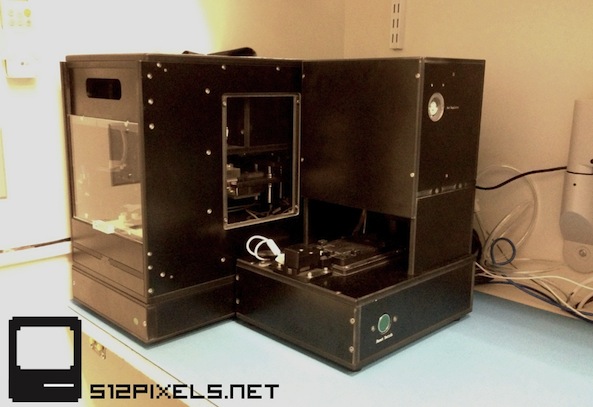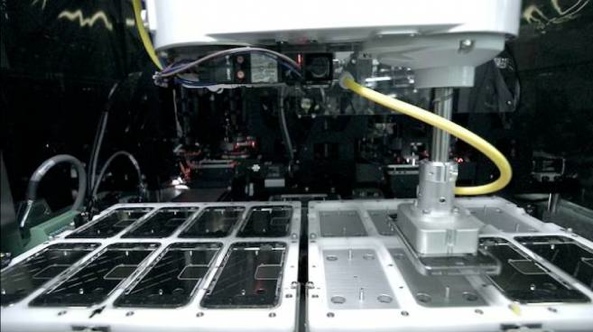‘Gadgets that build gadgets’ should have been the headline of the Bloomberg piece which details Apple’s multi-billion dollar investments in custom-engineered manufacturing equipment, machines and robots which dutifully churn out your shiny new iPads and iPhones with their diamond-cut chamfered edges, precision crafted down to the micron.
‘The Rolex of smartphones’ is impossible to mass-produce using the existing tooling and manufacturing techniques. Because Apple custom-designs everything, it shouldn’t surprise you that it also designs its own manufacturing processes, techniques and cutting-edge production equipment.
Just how does the company utilize its billions on these pricey robots?
We already know from Apple’s Form 10-K filing with the US Securities and Exchange Commission that the company over the next year is investing a whopping $10.4 billion on supply chain robots and machinery you’ll never see, except in Apple’s polished product videos.
According to the Bloomberg piece:
To get a jump on rivals like Samsung Electronics Co. and lay the groundwork for new products, Apple is spending more on the machines that do the behind-the-scenes work of mass producing iPhones, iPads and other gadgets.
That includes equipment to polish the new iPhone 5c’s colorful plastic, laser and milling machines to carve the MacBook’s aluminum body, and testing gear for the iPhone and iPad camera lens, said people with knowledge of the company’s manufacturing methods, who asked not to be identified because the process is private.
Reporter Adam Satariano writes that “Apple engineers often spend weeks at facilities in Asia making sure the parts and equipment they buy or make are working properly”.
Interestingly, the article suggests that Apple’s manufacturing process has “taken on heightened urgency” under Tim Cook’s watch.
Of course, Apple owes much of its production prowess, manufacturing expertise and operational efficiency to the current CEO Tim Cook who under the Steve Jobs regime served as Apple’s operations chief.
The position is now occupied by SVP of Operations, Jeff Williams.
As such, Cook is largely attributed with Apple’s uncanny ability to tap a vast network of suppliers and production partners in Asia in Taiwan and build high-quality products, on time and in volume.
“Their designs are so unique that you have to have a very unique manufacturing process to make it,” said Muthuraman Ramasamy, an analyst with consulting firm Frost & Sullivan, who has studied the use of the machinery.
“Apple has so much cash that they can invest in cutting-edge, world-class machinery that is typically used for aerospace and defense.”
This is how Apple’s U.S. plant makes the Mac Pro’s enclosure.
Like with components, Apple is said to be increasingly striking exclusive machinery deals, placing the machines in the factories of its suppliers. There really is no other way to mass-produce so uniquely designed gadgets.
The most recent example involves the upcoming sapphire glass plant in Mesa, Arizona requiring Apple to prepay $578 million to GT Advanced for the next-generation equipment such as large capacity ASF furnaces.
Contrast Apple’s approach to its rivals:
“Most companies will hire a design firm to create a rendering of a product, throw it over the wall to China and then it’s the Chinese engineers who do the detailed engineering work,” said Cormac Eubanks, product development director at industrial design firm Frog Design.
“What Apple does is hard and it takes a lot of time and money.”
Another example is the gyro inside the iPhone 4:
No testing equipment existed for the scale Apple needed – so its engineers built one, said the person.
The resulting contraption has a granite base and cubes that spin several iPhones around 30 degrees a second to test that the movement-tracking technology is functioning, said the person. Apple then had enough of the machines made to place at the end of suppliers’ assembly lines in China for iPhones to run through, said the person.
Here’s a custom-built machine Apple Stores use to calibrate the iPhone’s display.
I suggest reading the entire Bloomberg piece for more tidbits.
Terry Gou, who runs Foxconn – the world’s largest contract manufacturer which assembles many Apple products – last year said the iPhone 5 was “the most difficult device” his company had ever assembled.
“It’s not easy to make the iPhones,” Gou told Reuters. “We are falling short of meeting the huge demand”.
Little did Gou know that only a few months later his world-class manufacturing operation would suffer losses after Apple started returning millions of iPhone 5 units over quality control issues dealing with Scuffgate.
As the production woes inevitably resulted in a near-term gross margin hit, Apple eventually contracted two new Taiwanese manufacturers to build iOS gadgets, Wistrol and Compal Communications.
Are you glad that Apple is investing billions into materials research, production processes and sophisticated machinery?
Do you care about Apple’s design and build quality?
And how important to you is the way a product feels in your hands?



